Abstract
A pressure chamber was used to measure matric potentials of frozen and thawed leaves. Significant matric potentials were demonstrated in sunflower (Helianthus annuus L.), yew (Taxus cuspidata Sieb. and Zucc.), and rhododendron (Rhododendron roseum Rehd.). Matric potentials were particularly negative in rhododendron and were correlated with the amount of cell wall present and with the volume of water outside the leaf protoplasts at comparable matric potentials. It was concluded that matric forces in leaves are associated mainly with cell walls, at least within the physiological range of water contents. Calculations indicated that the water potential of the solution in the cell wall could be estimated for living tissue from the sum of matric and osmotic potentials acting on water outside the protoplasts.
Full text
PDF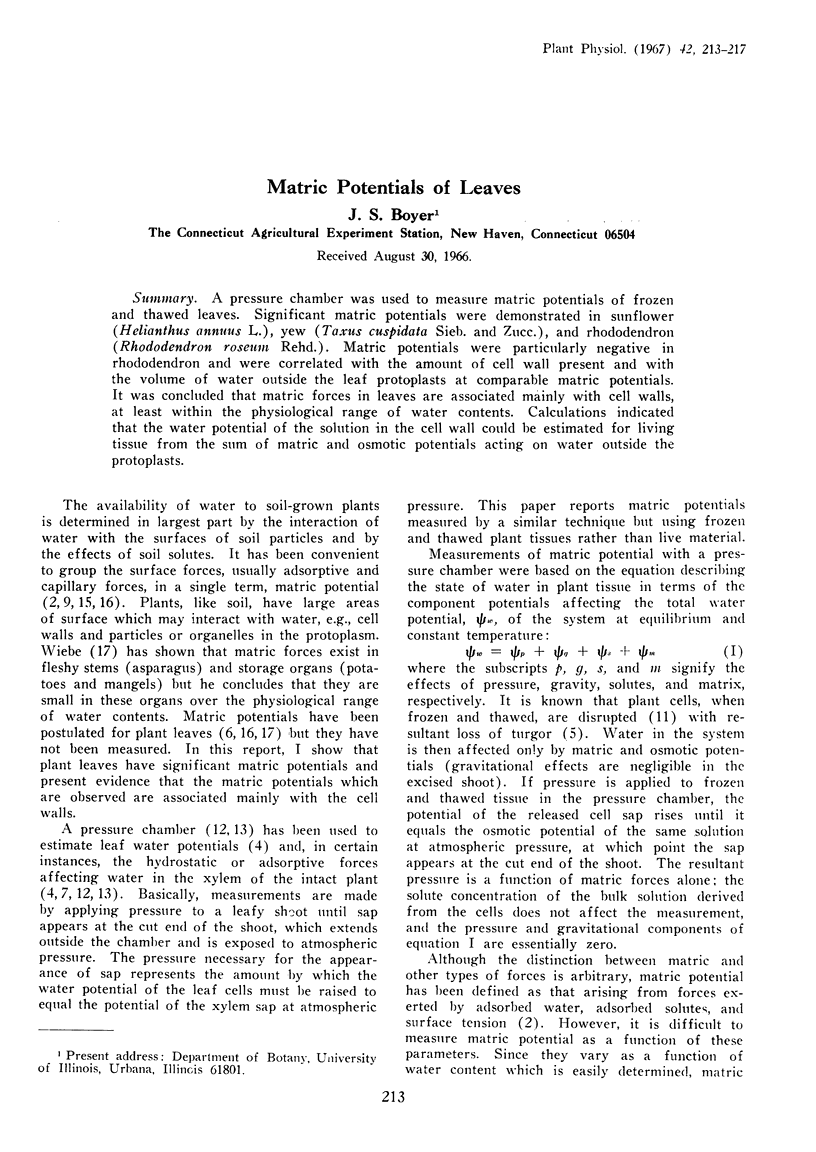
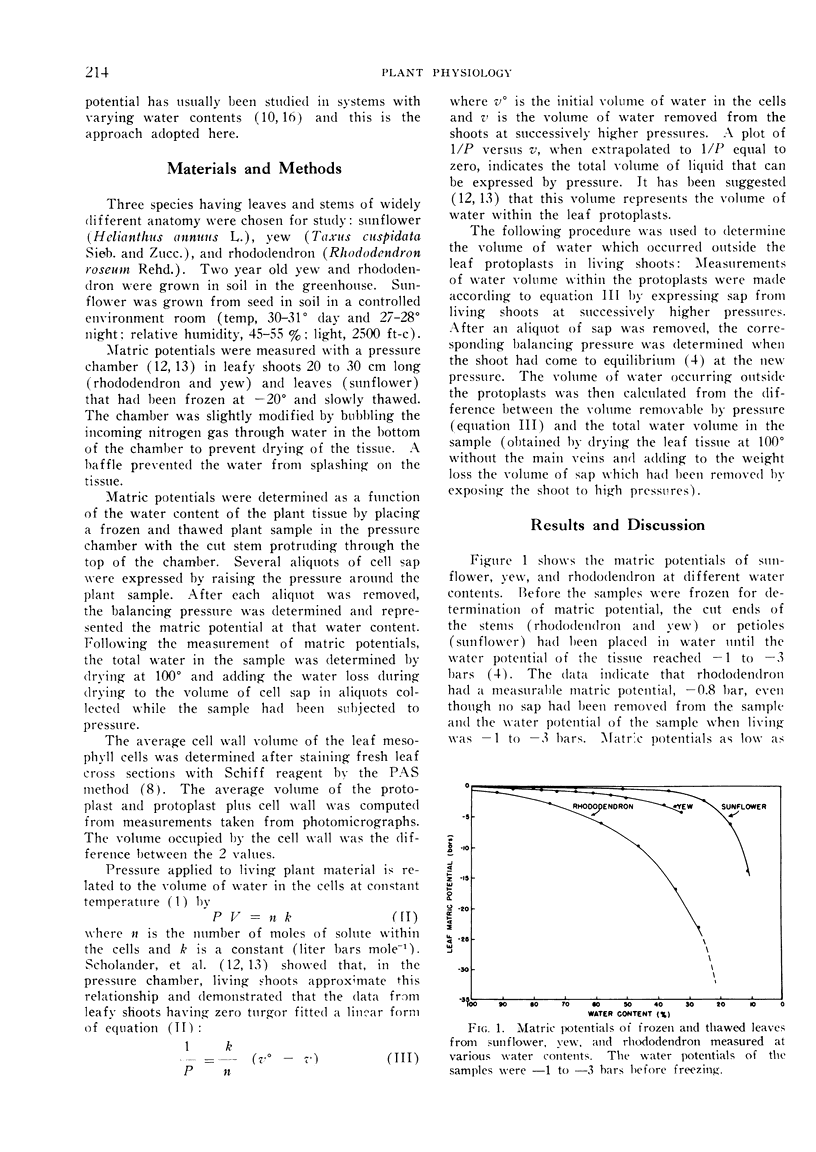
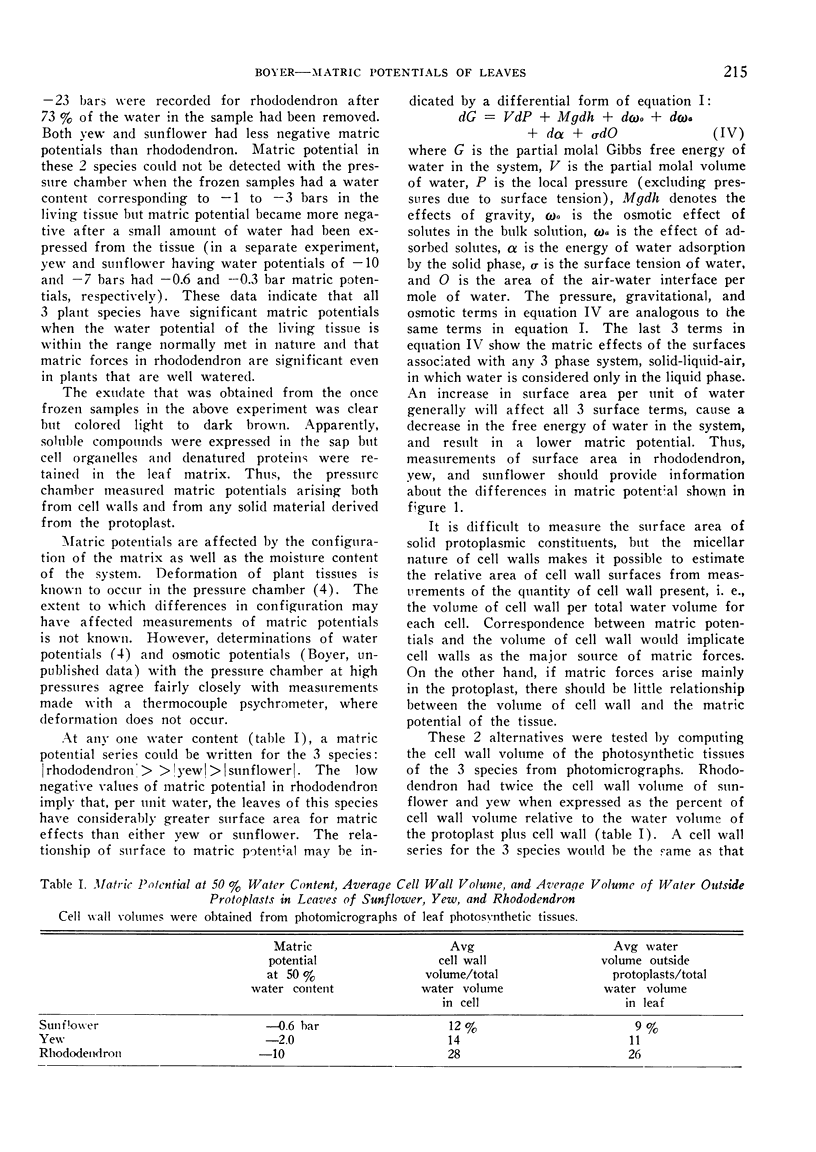
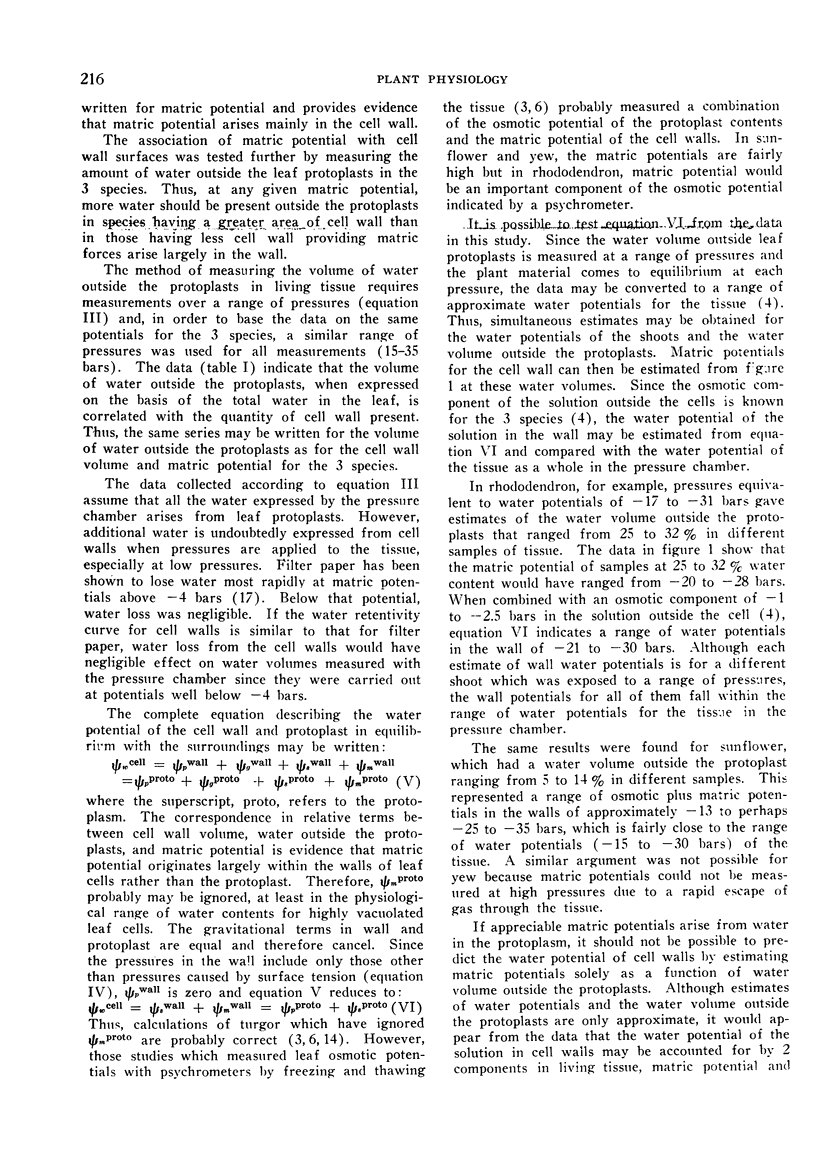
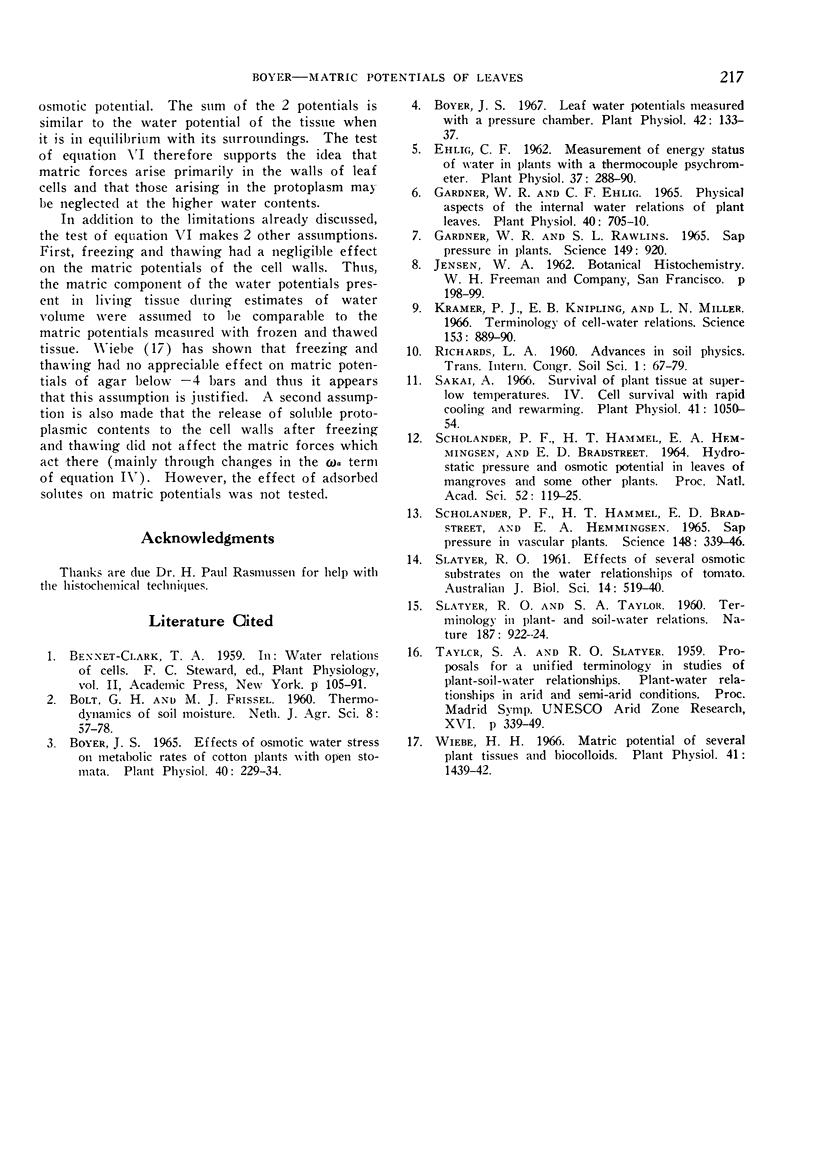
Selected References
These references are in PubMed. This may not be the complete list of references from this article.
- Boyer J. S. Effects of Osmotic Water Stress on Metabolic Rates of Cotton Plants with Open Stomata. Plant Physiol. 1965 Mar;40(2):229–234. doi: 10.1104/pp.40.2.229. [DOI] [PMC free article] [PubMed] [Google Scholar]
- Boyer J. S. Leaf water potentials measured with a pressure chamber. Plant Physiol. 1967 Jan;42(1):133–137. doi: 10.1104/pp.42.1.133. [DOI] [PMC free article] [PubMed] [Google Scholar]
- Gardner W. R., Ehlig C. F. Physical Aspects of the Internal Water Relations of Plant Leaves. Plant Physiol. 1965 Jul;40(4):705–710. doi: 10.1104/pp.40.4.705. [DOI] [PMC free article] [PubMed] [Google Scholar]
- Gardner W. R., Rawlins S. L. Sap Pressure in Plants. Science. 1965 Aug 27;149(3687):920–920. doi: 10.1126/science.149.3687.920. [DOI] [PubMed] [Google Scholar]
- Kramer P. J., Knipling E. B., Miller L. N. Terminology of cell-water relations. Science. 1966 Aug 19;153(3738):889–890. doi: 10.1126/science.153.3738.889. [DOI] [PubMed] [Google Scholar]
- Sakai A. Survival of Plant Tissue at Super-Low Temperatures. IV. Cell Survival with Rapid Cooling and Rewarming. Plant Physiol. 1966 Jun;41(6):1050–1054. doi: 10.1104/pp.41.6.1050. [DOI] [PMC free article] [PubMed] [Google Scholar]
- Scholander P. F., Bradstreet E. D., Hemmingsen E. A., Hammel H. T. Sap Pressure in Vascular Plants: Negative hydrostatic pressure can be measured in plants. Science. 1965 Apr 16;148(3668):339–346. doi: 10.1126/science.148.3668.339. [DOI] [PubMed] [Google Scholar]
- Scholander P. F., Hammel H. T., Hemmingsen E. A., Bradstreet E. D. HYDROSTATIC PRESSURE AND OSMOTIC POTENTIAL IN LEAVES OF MANGROVES AND SOME OTHER PLANTS. Proc Natl Acad Sci U S A. 1964 Jul;52(1):119–125. doi: 10.1073/pnas.52.1.119. [DOI] [PMC free article] [PubMed] [Google Scholar]
- Wiebe H. H. Matric potential of several plant tissues and biocolloids. Plant Physiol. 1966 Nov;41(9):1439–1442. doi: 10.1104/pp.41.9.1439. [DOI] [PMC free article] [PubMed] [Google Scholar]


